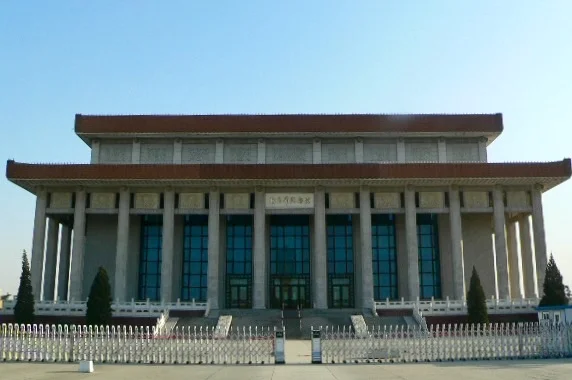WHAT TO DO IN CHINA IN FOUR DAYS
After family, good friends are the best choice for travel companions. While I was based in London, my good friends Krishna and Farid were in Jakarta and Ima was living in Seoul at that time, we all decided to meet up in Beijing. It was one of the most fun trips I have ever taken with friends. It was also the first time to mainland China for all of us and because of the limited time we all had, we decided to just stay in the capital, Beijing, for four days including a day trip to Xi’an. We had an amazing trip.
Just a suggestion: watch the movie “The Last Emperor” starring John Lone and Peter O’Toole before you visit The Forbidden City in Beijing, just to give a glimpse of what it was like living there!
The People’s Republic of China is the world’s most populous country with a population of almost 1.4 billion people scattered around an area of 9.6 million km2. It is the 2nd largest country in the world by land area. China has a vast and diverse landscape, ranging from forestland, Taklamakan and Gobi deserts in the north and subtropical forests in the south. The mountains of Himalaya, Tian Shan, Karakram and Pamir separates the country from South and Central Asia. The coastline along the Pacific Ocean runs abut 14,500km.
There is archaeological evidence of early hominids inhabited China as far as 2.2 million to 250,000 years ago. For example: fossils of Peking Man, a Homo erectus, was discovered in a cave near Beijing, as well as fossilised teeth of Homo sapiens discovered in Hunan.
The first Chinese dynasty was believed to be Xia around 2100 BC, succeeded by the Shang dynasty that ruled the plain of the Yellow River in the eastern part of China from 17th to 11th century BC. Zhou dynasty took over and ruled from 11th to 5th century BC and throughout this period many independent states were formed and they continually engaged in war with each other. The Warring States period between the 5th to 3rd century witnessed seven powerful sovereign states emerged, each with its own king and army.
In 221 BC, King Zheng proclaimed himself the First Emperor of the Qin dynasty and it was followed by the dynasties of Han, Jin, Tang, and Song. The Mongol Empire lead by Kublai Khan took over in 1271 and established the Yuan dynasty. A peasant by the name of Zhu Yuanzhang took over in 1368 and created the Ming dynasty. This led to China’s golden age period where the country became one of the richest and strongest economy in the world. The capital was relocated from Nanjing to Beijing. The Qing dynasty took over in 1644 and ruled until 1912, ending China’s long period of dynastic rule.
In 1912, the Republic of China was born and Sun Yan-sen of the Koumintang (Nationalist Party) became president. After facing several years of economic, social and political unrest, the country was re-unified in the late 1920s under Chiang Ki-shek through its Northern Expedition of skilful military and political manoeuvrings. There was continued political divisions in the country during this time, particularly between the Koumintang and the Communist Party, or the People’s Liberation Army (“PLA”).
By end of second Chinese-Japanese War (1937-1945), which gave control back from Japan to China, the country was war-ravaged and financially distressed. Continued conflict eventually led to civil war. This ended in 1949 when the Communist Party took control of most of mainland China, leading to Koumintang, or Republic of China (“ROC”), to retreat offshore and reduced their territory to only Taiwan, Hainan and surrounding islands. In October 1949, Chairman Mao Zedong proclaimed formation of the People’s Republic of China (“PRC”), which took control of Hainan in 1950 and incorporated Tibet. In 1971, PRC replaced ROC in the UN and took the seat of a permanent member of the Security Council.
Following Chairman Mao’s death in 1976 and economic liberalisations starting in 1978, the country became one of the world’s fast-growing economies. China is now one of the largest economy and largest trading power in the world. The country continues to be governed by the Communist Party and oversees jurisdiction of over 22 provinces. China also exercises control of: four direct-control municipalities (Beijing, Tianjin, Shanghai and Chongqing); and two self-governing special administrative regions (Hong Kong and Macau)
The capital Beijing, formerly known as Peking, is in northern China and is the third most populated city in the world with 25 million people living in the city’s metro area. Beijing is governed as a municipality, surrounded by Hebei Province (except Tianjin) and together with the city and municipality they form the Jinginji metropolitan region and the national capital region of the country. Beijing is a combination of modern and traditional architecture and it continues to be an always-changing megacity with heavy global influences in business and economy, politics, education, culture, sports, entertainment, fashion and technology.
Recommended Airlines
From Europe: British, Lufthansa, Air France, SAS, Virgin Atlantic and Swiss Air.
From Others: Singapore, Cathay Pacific, Qatar, Emirates, and Air China.
Domestic (Beijing – Xi’an): Air China, China Southern, China Eastern and Hainan.
Airport
Beijing: Beijing Capital International Airport and Beijing Nanyuan Airport.
Xi’an: Xianyang International Airport.
Recommended Hotels (Beijing)
Great Hotel, Regent, Waldorf Astoria, Park Hyatt, Shangri-La, Sofu, Hilton and Red Wall Garden Boutique.
Public Transportation
Metro, Buses and Taxis.
Recommended Restaurants
Da Dong, Temple Restaurant, Dali Courtyard, Jingzun Pekingduck, Baoyuan Dumpling, Lost Heaven and King’s Joy.
Places . . .
Recommended Places to Go . . .
Featured . . .









